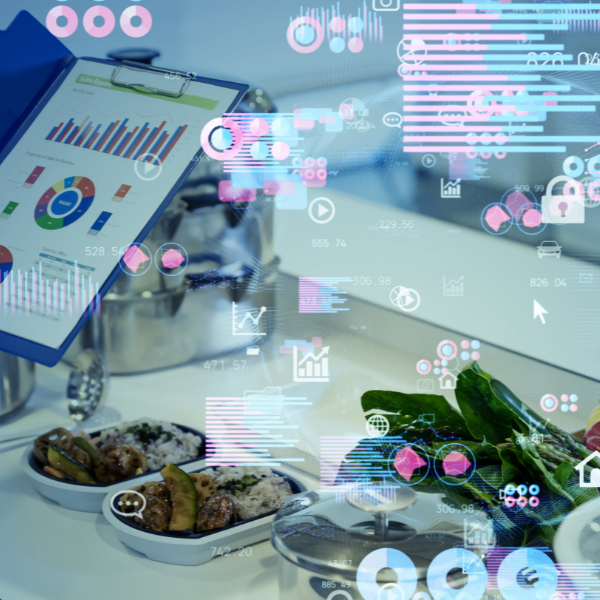In today’s competitive foodservice landscape, efficiency is crucial for sustained success. As customer expectations increase and margins tighten, operators must look to innovation to streamline operations and stay ahead. Kitchen technology — from automation and smart devices to software systems — is reshaping how commercial kitchens function, improving productivity, consistency, and sustainability.
This guide explores how leveraging technology can drive measurable gains in kitchen efficiency and outlines actionable strategies for modern foodservice operations.
Embracing Kitchen Automation Systems
Key Benefits Of Kitchen Automation:
Consistency: Delivers uniform cooking results, improving food quality and guest satisfaction.
Efficiency: Cuts down prep time and reduces labor strain during peak hours.
Scalability: Easily expands with operations, helping kitchens adapt to high demand.
A fast-casual chain, for instance, implemented automated fryers that autonomously adjusted temperatures and cook times — freeing staff and improving throughput during rush periods.
Leveraging Smart Kitchen Devices
Examples Of Smart Devices In Commercial Kitchens:
Connected Ovens: Enable remote temperature and timer adjustments to optimize cooking during busy shifts.
IoT Inventory Sensors: Monitor stock levels and notify teams of low supplies — streamlining reordering.
Energy-Efficient Appliances: Reduce electricity usage and operational costs without compromising performance.
A restaurant group using smart refrigeration saw improved food safety and energy savings by remotely monitoring internal temps and adjusting settings based on real-time usage patterns.
Streamlining Operations With Kitchen Efficiency Software
Advantages Of Kitchen Efficiency Software:
Improved Coordination: Syncs front- and back-of-house tasks for smoother service.
Actionable Insights: Provides reports on prep time, inventory turnover, and order flow.
Inventory Optimization: Reduces over-ordering and spoilage through predictive analytics.
For example, a fine-dining restaurant used scheduling and ingredient tracking tools to reduce wait times and eliminate overproduction during slow periods.

Enhancing Food Safety With Technology
Tech-Driven Food Safety Practices:
Automated Temperature Logs: Digitally track and store temperature records for inspections.
HACCP Monitoring Systems: Track critical control points and alert teams of deviations.Allergen Safe Tools: Help prevent cross-contamination by implementing color coded organization.
In a healthcare kitchen setting, for example, digital food safety tools ensure every meal meets rigorous hygiene standards — helping protect vulnerable diners.
Adopting Tech Innovations In Foodservice
Future-Proofing With Foodservice Tech:
AI Forecasting: Uses sales trends and external factors to predict inventory needs and adjust orders.
VR Training Modules: Simulate real kitchen environments to train staff efficiently and safely.
Blockchain Tracking: Improves ingredient traceability and strengthens consumer trust in sourcing transparency.
A quick-service restaurant chain used predictive analytics to stock ingredients based on local weather patterns, increasing sales of seasonal menu items and reducing waste.
Tech-Driven Kitchens Are The Future Of Foodservice
Technology is no longer optional in modern kitchens — it’s the foundation of sustainable, high-efficiency operations. From automation and smart devices to software and predictive analytics, today’s foodservice tech empowers teams to serve better, faster, and smarter.
Explore Restaurantware’s range of innovative kitchen technology solutions to elevate your kitchen’s performance, reduce waste, and stay competitive in an evolving industry.
How Do Kitchen Automation Systems Impact Staffing?
Automation reduces the load of repetitive tasks, enabling staff to focus on more skilled, rewarding responsibilities — improving morale and efficiency.
Are Smart Kitchen Devices Difficult To Integrate?
Most smart tools are plug-and-play and integrate seamlessly with existing operations, requiring minimal downtime for onboarding.
How Do Tech Solutions Support Sustainability?
By reducing waste, conserving energy, and streamlining workflows, technology directly supports environmentally responsible and cost-effective kitchen practices.









